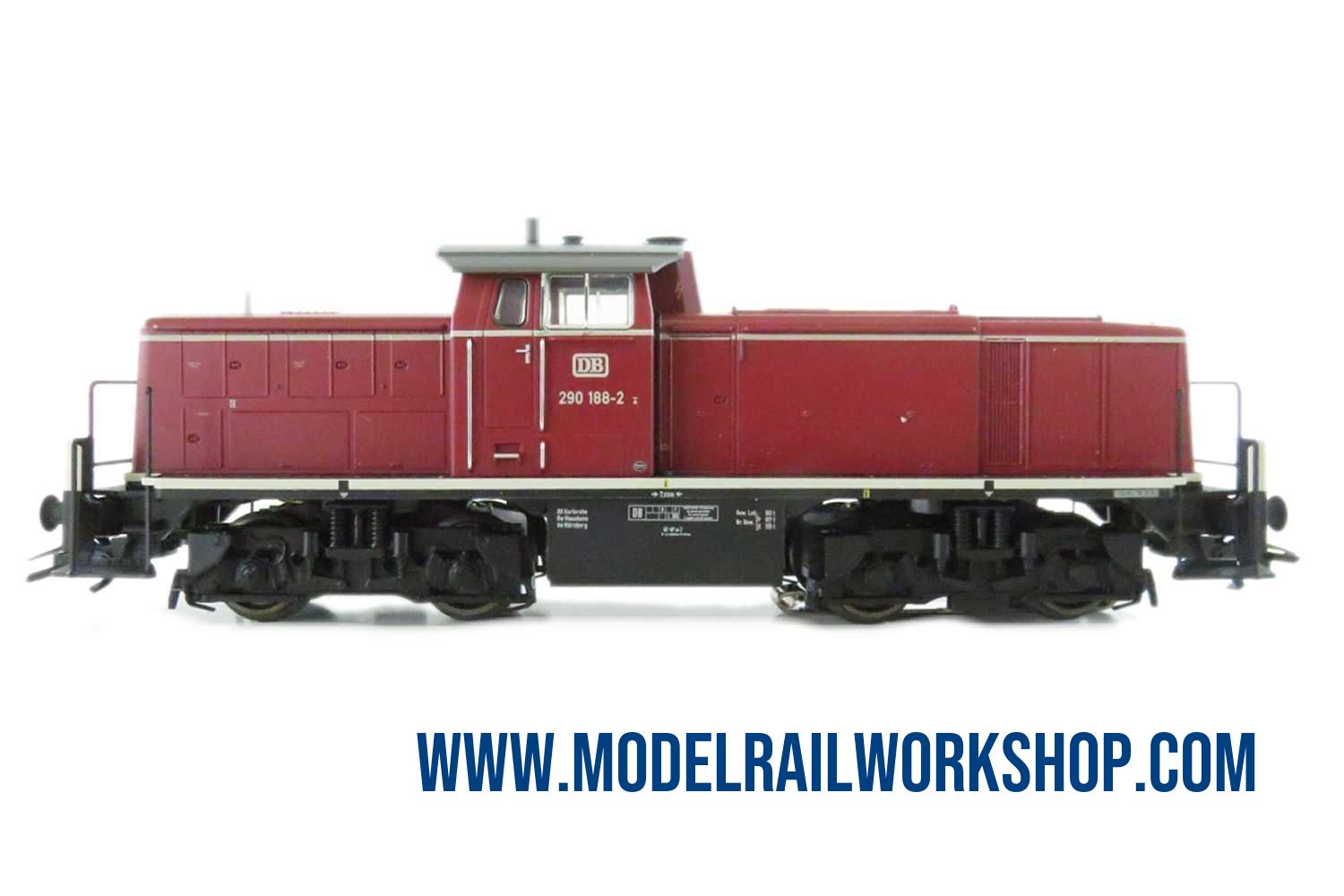
| KEY DATA | |
|---|---|
| Product Name | 37901 Diesel locomotive - BR 290 |
| Object type | Locomotive-Diesel |
| Product Line | Märklin |
| Era | 1970-1990 (IV) |
| Manufactured years | 2006-2007 |
| Type of housing | Synthetic/Metal |
| Length | 16.4 cm |
| Technology | Digital MFX |
| Railway company | DE-DB |
| Koll valuation (Year) | 110€ (2022) |
| Url to Märklin | Klick to GoTo www.maerklin.de |
| No | Obj.No | Obj.txt | Category | Description |
|---|---|---|---|---|
| 37901-1 | 290 188-2 | DB | 290 | 2006-2007 Diesel loc - wine red |
| 37901-10 | 290 999-2 | - | 290 | 2017-209 Diesel loc - wine red - included in train set 26290 |
| 37901-20 | 290 184-1 | DB | 290 | 2015-2017 Diesel loc - wine red - included in train set 2920 and 29741 |
| Description | |
|---|---|